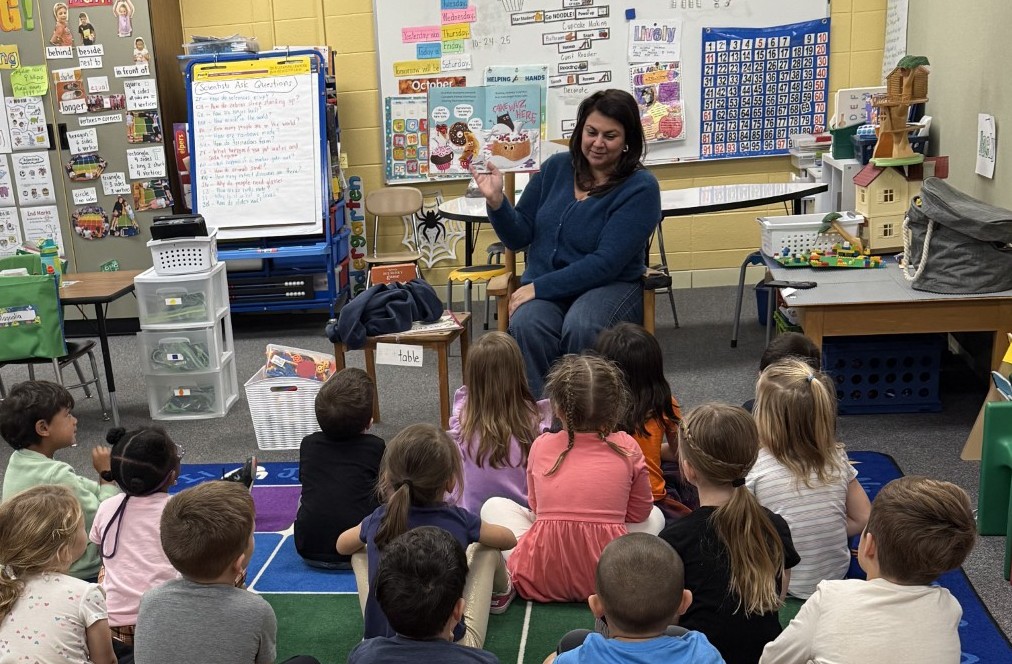Gym Class Can Go High-Tech, Too
When the battle of the bulge is fought every day in our schools, the conversations usually revolve around removing the symptoms of childhood obesity, like limiting sugary options in vending machines and offering healthier school lunches, rather than addressing the root cause of the problem – lack of physical activity. Physical education (PE) teachers know this better than anyone, and I believe “flipping” our students’ PE experience is one step toward healthier students.
Keeping kids moving is the goal of any physical education teacher, but the mainstream gym class model doesn’t maximize physical activity. Students spend a significant portion of gym class sitting and listening to information or instructions, learning about what they’re going to do before doing it. While learning the rules of a sport is valuable, anything preventing students from moving around and getting exercise during that short block of time is a departure from the core value of PE.
PE may not be the first educational frontier being reshaped by technology, but this revolution is happening at my school and should happen in more gymnasiums across the country. I hope to be just the first of a new breed of PE pioneers, keeping students engaged – and moving – by “flipping the gym,” a new take on the flipped learning instruction model. When flipping a class, teachers film lectures with software like Camtasia Studio (my go-to video recording and editing tool) and have students watch the videos at home – so time in class is spent covering questions on the material, not teaching new content. I’m taking this exact approach in my gym class because I am able to eliminate – or significantly reduce – the time my students spend sitting by delivering instructions beforehand.
Flipping my PE class was fairly simple. Our school’s lead technology facilitator came in at the beginning of the school year to introduce us to the flipped learning model. I realized the whole idea was to make the best use of one-on-one instructional time. By applying the flipping model to our PE program we created an active class environment.
Here’s how I recommend other PE teachers get started. The most important thing: do what makes sense for your program. At Joseph Sears School, I don’t make a new flipped video for every day. But when we start a new unit, like volleyball, we create a video on the rules and have the students watch that video and take an online quiz outside of class. The quiz helps us confirm students know the rules so we can begin games sooner and reduce the number of times we need to pause to provide instruction.
While the concept of flipping PE is pretty cool in itself, I like to use technology to engage my students in ways that extend beyond the classroom. I use my mobile technology in other aspects of my teaching and coaching as well, which enhances my ability to provide guidance and feedback to students real-time. This has immediate impact.
As a coach, I use Coach’s Eye, a mobile instant video analysis tool. Instead of lugging around a camera, I use my iPod touch to film my students as they practice and play. I can instantly review video with my students frame-by-frame, so they immediately see what they are doing and make any necessary adjustments to their technique. This is especially helpful for our volleyball unit, because it gives me the ability to show a student exactly what they need to do to improve their serve seconds after it hits the net - something I never before thought possible in my classroom.
Tools and ideas to transform education. Sign up below.
I believe we are at a pivotal point in physical education. Emerging technology is our gateway to a better gym class, and I hope to encourage more “gym class flippers” to make flipping PE a common practice. After all, what better way to get students moving than to give them more time to move in class? It’s not rocket science – in fact, it’s just a game.
Jason Hahnstadt is a physical education teacher and coach at the Joseph Sears School in Kenilworth, IL.
